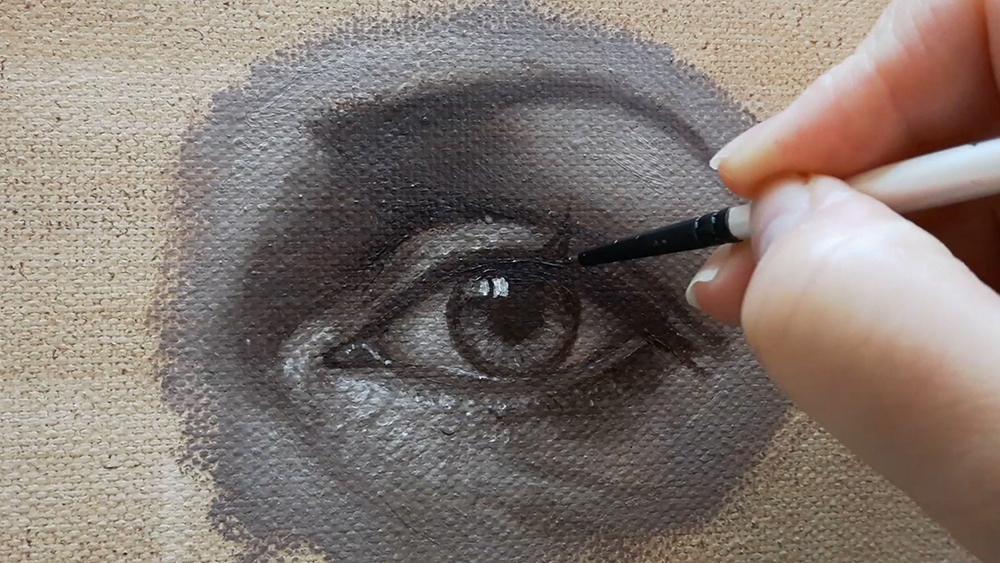How to create sparkling eyes in oil paint
This step-by-step tutorial has advice for creating realistic eyes using oil paint.

Stunning eyes may be the key to creating a successful portrait, but they are not always easy to get right. In this three-step guide, Kate Oleska will share her expert tips for painting sparkling human eyes, with all you need to know about making them super-realistic.
- Paintbrushes
- Oil paints
- Canvas
So that your portraits can come alive, you'll learn the importance of judging values and observing the anatomy of the eyes. And to make to make it even clearer, the steps are demonstrated by videos to show you exactly how it's done.
Before you begin, you'll need the perfect kit such as the best oil paints and best oil paint supplies (see the deals we've found below). All set? Let's get going...
01. Tint the canvas
Although it may not seem important, it is crucial to avoid working on a white canvas (for options, see our best oil paint canvas guide). I recommend tinting the canvas with a wash that is a mixture of thinner and any oil paint (in this case, burnt umber). This is to help you judge values more efficiently. It also eliminates the natural fear of putting the first brushstroke onto a clean surface.
02. Consider the anatomy of the eye
Establishing an anatomically correct sketch is very important. Every eye is different and looks different from different angles. Keep in mind that the eye is
a round ball with an iris, covered with a cornea shaped like a dome. The eyelids have thickness as well and they will form shadows on the white and iris of the eye.
03. Block in colours
To block in first colours or/and values, you need to try to look past the details that will always try to grab your attention. Squint your eyes and block in similar adjacent colours and values in one go. Don’t worry, this is only a base for the details that will come later. Pay no attention to eyelashes and wrinkles. Think big.
04. Add detail
Now is the time to start adding details. If you blocked in the base colours properly, you will now only need to worry about refining details and adding paint where it will make a difference. Adjust shapes and apply textures. Don’t overdo it though – it is easy to forget yourself and render too much. Paint only what you see and not what you think should be there.
Daily design news, reviews, how-tos and more, as picked by the editors.
Read more:
- Essential oil painting techniques: All you need to know
- Urban oil painting: Tips to achieve a brilliant picture
- Best art supplies: These are the products to invest in

Kate is an artist specialising in portraits and pet portraits. She mainly works in oils, charcoal and pencil.
Most recently her artwork, Serenity, has been accepted and shown at the Royal Society of Portrait Painters Annual Exhibition in London . Her painting"Portrait of an Artist" was shown at the Royal Institute of Oil Painters 125th Annual Exhibition in London in 2017. The painting was also selected as a finalist in the prestigious International ARC Salon Competition in 2019 .
The International ARC Salon Competition is the most far reaching and influential competition for Contemporary Realism in the world.
- Georgia CogganEditor
